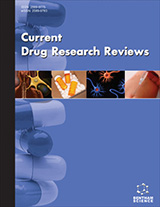
Abstract
Background: Recurrent glioblastoma multiforme (rGBM) has a grim prognosis, with current therapies offering no survival benefit. Several combination therapies involving anti-VEGF agents have been studied with mixed results.
Methods: A systematic search was performed using five electronic databases: PubMed, Scopus, ISI, Embase, and the Cochrane Library, without language limitations. The primary outcome of interest was progression-free survival (PFS). Secondary outcomes were overall survival (OS), objective response ratio (ORR), and grade ≥ 3 adverse events. Estimates for PFS and OS were calculated as random effects hazard ratio (HR) with 95% confidence intervals (CIs) using the generic inverse variance method. Estimates for ORR and grade ≥ 3 adverse events were calculated using a random-effects risk ratio (RR) with 95% confidence intervals (CIs) using the Mantel-Haenszel method.
Results: Thirteen studies met the inclusion criteria and a total of 1994 patients were included in the analysis. There was no statistically significant improvement in PFS (HR 0.84; 95% CI (0.68, 1.03); I2=81%), OS (HR 0.99; 95% CI (0.88, 1.12); I2=0%), and ORR (RR 1.36; 95% CI (0.96, 1.92); I2=61%) in the combination therapy group when compared to the control group. Significantly higher grade ≥ 3 adverse events (RR 1.30; 95% CI (1.14, 1.48); I2=47%) were seen in the combination therapy when compared to the control group.
Conclusion: Our analysis showed that the use of combination therapy with anti-VEGF agents did not offer any benefit in PFS, OS, or ORR. In contrast, it had significantly higher grade 3-5 adverse events. Further studies are needed to identify effective therapies in rGBM that can improve survival.
Keywords: GBM, Vascular endothelial growth factors, Anti-angiogenic therapy, Bevacizumab, Survival outcomes, rGBM
Graphical Abstract
[http://dx.doi.org/10.1007/s00415-009-5167-6] [PMID: 19434438]
[http://dx.doi.org/10.2174/1570159X19666210113152108] [PMID: 33441071]
[http://dx.doi.org/10.3389/fonc.2020.590648] [PMID: 33251147]
[http://dx.doi.org/10.2174/1570159X14666160223121002] [PMID: 26903150]
[http://dx.doi.org/10.2174/1570159X14666160509123229] [PMID: 27157264]
[http://dx.doi.org/10.1007/s12035-020-01892-8] [PMID: 32152825]
[http://dx.doi.org/10.3390/cells8091102] [PMID: 31540455]
[http://dx.doi.org/10.1093/neuonc/noz232] [PMID: 31844890]
[http://dx.doi.org/10.1016/j.surneu.2008.11.012] [PMID: 19329156]
[http://dx.doi.org/10.1200/JCO.2008.19.8721] [PMID: 19720927]
[http://dx.doi.org/10.1200/JCO.2008.16.3055] [PMID: 19114704]
[http://dx.doi.org/10.2174/1386207322666190119162352] [PMID: 30663563]
[http://dx.doi.org/10.2174/1574887113666180328104109] [PMID: 29595113]
[http://dx.doi.org/10.2217/cns.15.8] [PMID: 25906439]
[http://dx.doi.org/10.1371/journal.pone.0168264] [PMID: 28005980]
[http://dx.doi.org/10.1158/1078-0432.CCR-05-1418] [PMID: 17062691]
[http://dx.doi.org/10.2217/cns.12.36] [PMID: 23750318]
[PMID: 14757844]
[http://dx.doi.org/10.1136/bmj.d5928] [PMID: 22008217]
[http://dx.doi.org/10.1136/bmj.g7647] [PMID: 25555855]
[http://dx.doi.org/10.1016/0197-2456(95)00134-4] [PMID: 8721797]
[http://dx.doi.org/10.1186/1745-6215-8-16] [PMID: 17555582]
[http://dx.doi.org/10.1200/JCO.2012.47.2464] [PMID: 23940216]
[http://dx.doi.org/10.1634/theoncologist.2018-0290] [PMID: 30266892]
[http://dx.doi.org/10.1200/JCO.2015.64.7685] [PMID: 27918718]
[http://dx.doi.org/10.1093/neuonc/nov104] [PMID: 26130744]
[http://dx.doi.org/10.1002/cncr.32340] [PMID: 31290996]
[http://dx.doi.org/10.1002/cncr.32811] [PMID: 32154928]
[http://dx.doi.org/10.1158/1078-0432.CCR-20-2500] [PMID: 33199490]
[http://dx.doi.org/10.1093/neuonc/noaa062] [PMID: 32166308]
[http://dx.doi.org/10.1016/S1470-2045(14)70314-6] [PMID: 25035291]
[http://dx.doi.org/10.1007/s11060-016-2195-9] [PMID: 27406589]
[http://dx.doi.org/10.1056/NEJMoa1707358] [PMID: 29141164]
[http://dx.doi.org/10.1073/pnas.1215397109] [PMID: 23045683]
[http://dx.doi.org/10.2174/0929867326666190621120523] [PMID: 31223079]

























